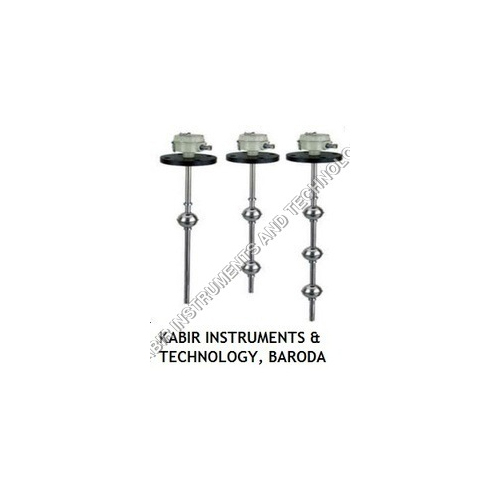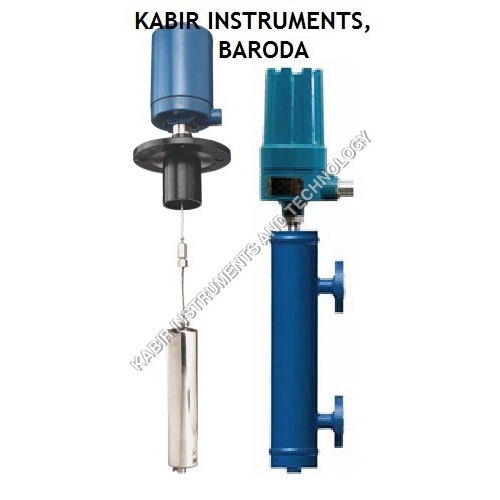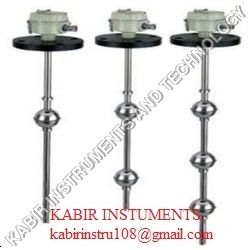Call Us
07971459101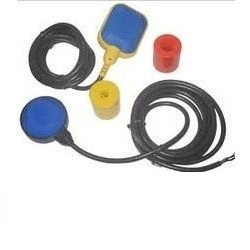
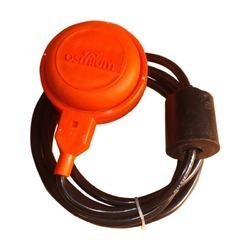
Float Level Switch
Product Details:
- Rated Voltage 230 Volt (V)
- Temperature Range 150 Celsius (oC)
- Protection Level IP65
- Material Plastic
- Size Standard
- Click to view more
Float Level Switch Price And Quantity
- 270 INR/Piece
- 1 Piece
Float Level Switch Product Specifications
- 230 Volt (V)
- IP65
- 150 Celsius (oC)
- Standard
- Plastic
Float Level Switch Trade Information
- 10 Piece Per Week
- 1 Week
Product Description
A float level switch is a device used for liquid level sensing and control. It operates based on the principle of buoyancy. The switch typically consists of a buoyant float that rises and falls with the liquid level. As the liquid level changes, the float moves with it, activating or deactivating a switch based on predefined setpoints.
How a Typical Float Level Switch Works
-
Float Mechanism:
The float is often made of a buoyant material such as foam or plastic. It is attached to a lever or rod that moves with the rise and fall of the liquid level. -
Switch Mechanism:
The switch is connected to the float mechanism. It can be a mechanical switch or a modern electronic switch, depending on the design. The switch is positioned at a certain height on the float mechanism and is activated or deactivated as the float reaches specific levels. -
Mounting:
The float level switch is usually mounted inside a tank or container at the desired level where you want to monitor the liquid. -
Wiring:
In electronic float level switches, wiring connects the switch to a control system, triggering alarms or other actions based on the liquid level.
Applications of Float Level Switches
-
Pump Control:
Ensures pumps activate when liquid is high and deactivate when low. -
Tank Level Monitoring:
Monitors and controls liquid levels in tanks, preventing overflows or low-level issues. -
Alarm Systems:
Alerts operators or control systems when a certain liquid level is reached. -
Industrial Processes:
Used in various industrial processes requiring precise liquid level monitoring and control. -
Sump Pump Systems:
Activates pumps in residential and commercial sump pits to prevent flooding. -
Oil and Gas Industry:
Monitors levels in storage tanks to prevent overfilling and ensure safe storage. -
Wastewater Treatment:
Controls levels of sewage and liquids during different treatment stages. -
Cooling Systems:
Maintains proper water levels in cooling towers and other systems. -
HVAC Systems:
Monitors water levels in humidifiers, boilers, and other HVAC components. -
Food and Beverage Industry:
Monitors liquid levels in tanks and containers during production and processing. -
Marine Applications:
Ensures bilge pumps remove water efficiently to prevent flooding. -
Chemical Processing:
Controls liquid levels in storage tanks and vessels, preventing spills and ensuring safety.
Float Level Switch Specifications
-
Standard Range: 100 mm to 3000 mm
-
Temperature: Up to 150°C
-
Pressure: Up to 15 Kg/cm²
-
MOC: SS 304, SS 316, SS 316L, PP, PVDF
-
Connection: Flange End / Screwed / To Specify
FAQs of Float Level Switch:
Q: What material is the Float Level Switch made of?
A: The Float Level Switch is made of plastic.Q: What is the temperature range the Float Level Switch can handle?
A: The Float Level Switch can handle temperatures up to 150C.Q: What protection level does the Float Level Switch have?
A: The Float Level Switch has an IP65 protection level.Q: What is the rated voltage of the Float Level Switch?
A: The rated voltage of the Float Level Switch is 230 Volts (V).Q: What is the size specification of the Float Level Switch?
A: The Float Level Switch is available in a standard size.
Price:
- 50
- 100
- 200
- 250
- 500
- 1000+
Other Products in 'Level Switch' category
And also we want more inquires from countries like Middle East Countries, African Countries, South East Asia and North America.

 English
English Spanish
Spanish French
French German
German Italian
Italian Chinese (Simplified)
Chinese (Simplified) Japanese
Japanese Korean
Korean Arabic
Arabic Portuguese
Portuguese

